
Or search by topic

Number and algebra
- The Number System and Place Value
- Calculations and Numerical Methods
- Fractions, Decimals, Percentages, Ratio and Proportion
- Properties of Numbers
- Patterns, Sequences and Structure
- Algebraic expressions, equations and formulae
- Coordinates, Functions and Graphs
Geometry and measure
- Angles, Polygons, and Geometrical Proof
- 3D Geometry, Shape and Space
- Measuring and calculating with units
- Transformations and constructions
- Pythagoras and Trigonometry
- Vectors and Matrices
Probability and statistics
- Handling, Processing and Representing Data
- Probability
Working mathematically
- Thinking mathematically
- Mathematical mindsets
- Cross-curricular contexts
- Physical and digital manipulatives
For younger learners
- Early Years Foundation Stage
Advanced mathematics
- Decision Mathematics and Combinatorics
- Advanced Probability and Statistics
Recommended Books
Here is a list of books that we would recommended for young people who are interested in mathematics. They are grouped into three different categories:
History of Mathematics
Recreational, thinking mathematically.
We have given each book a lower age band based on the content and language used in the book and have presented them in ascending order of age. This is merely a guideline and you are welcome to make your own judgements on whether or not a book is suitable.
If you'd like to see some book recommendations for younger learners, take a look at the list of books compiled by our Primary team .
Students considering studying Maths or a related subject at university might be interested in the Cambridge Mathematical Reading List , which contains a wide range of suggested books including historical, recreational and technical maths books.
There are lots of maths podcasts you can listen to. Why not try: BBC's More or Less podcast Numberphile 's videos and postcasts.
The Boy Who Loved Math: The Improbable Life of Paul Erdős
Age 7+ Most people think of mathematicians as solitary, working away in isolation. And, it's true, many of them do. But Paul Erdős never followed the usual path. At the age of four, he could ask you when you were born and then calculate the number of seconds you had been alive in his head. But he didn't learn to butter his own bread until he turned twenty. Instead, he traveled around the world, from one mathematician to the next, collaborating on an astonishing number of publications. With a simple, lyrical text and richly layered illustrations, this is a beautiful introduction to the world of math and a fascinating look at the unique character traits that made "Uncle Paul" a great man.
Blockhead: The Life of Fibonacci
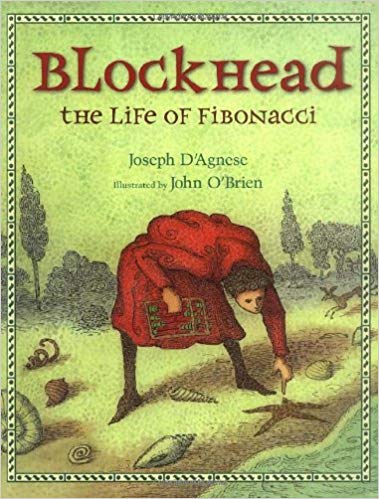
Infinity and Me
Uma can't help feeling small when she peers up at the night sky. She begins to wonder about infinity. Is infinity a number that grows forever? Is it an endless racetrack? Could infinity be in an ice cream cone? Uma soon finds that the ways to think about this big idea may just be . . . infinite.
On a Beam of Light: A Story of Albert Einstein
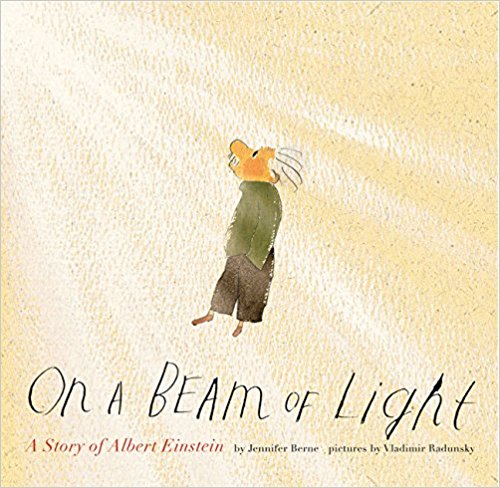
Travel along with Einstein on a journey full of curiosity, laughter, and scientific discovery. Parents and children alike will appreciate this moving story of the powerful difference imagination can make in any life.
50 Mathematical Ideas You Really Need to Know by Tony Crilly
In this book, Professor Tony Crilly explains in 50 clear and concise essays the mathematical concepts - ancient and modern, theoretical and practical, everyday and esoteric - that allow us to understand and shape the world around us. Packed with diagrams, examples and anecdotes, this book is the perfect overview of this often daunting but always essential subject. For once, mathematics couldn't be simpler.
The Math Book by Clifford A Pickover
Mathematic's infinite mysteries and beauty unfold in this book. Beginning millions of years ago with ancient ant odometers and moving through time to our modern-day quest for new dimensions, prolific polymath Clifford Pickover covers 250 milestones in mathematical history. Among the numerous concepts readers will encounter as they dip into this inviting anthology: cicada-generated prime numbers, magic squares, the discovery of pi and calculus, and the butterfly effect. Each topic is presented in a lavishly illustrated spread, including formulas, fascinating facts about scientists' lives and real-world applications of the theorems.
Alex's Adventures in Numberland by Alex Bellos
The world of maths can seem mind-boggling, irrelevant and, sometimes, boring. This groundbreaking book reclaims maths from the geeks. Mathematical ideas underpin just about everything in our lives: from the surprising geometry of the 50p piece to how probability can help you win in any casino. In search of weird and wonderful mathematical phenomena, Alex Bellos travels across the globe and meets the world's fastest mental calculators in Germany and a startlingly numerate chimpanzee in Japan. Packed with fascinating, eye-opening anecdotes, Alex's Adventures in Numberland is an exhilarating cocktail of history, reportage and mathematical proofs that will leave you awestruck.
The Monty Hall Problem: Beyond Closed Doors by Rob Deaves
This short book explores the Monty Hall dilemma, a well known mathematical puzzle. The original problem, the controversy surrounding it and its solution are discussed. Further, the boundaries of the problem are expanded to consider prior knowledge and host intention. This book should be of interest to those who enjoy problem solving.
The Language of Mathematics by Keith Devlin
In The Language of Mathematics, award-winning author Keith Devlin reveals the vital role mathematics plays in our eternal quest to understand who we are and the world we live in. More than just the study of numbers, mathematics provides us with the eyes to recognize and describe the hidden patterns of life. Devlin shows us what keeps a jumbo jet in the air, explains how we can see and hear a football game on TV, allows us to predict the weather, the behavior of the stock market, and the outcome of elections. Far from a dry and esoteric subject, mathematics is a rich and living part of our culture. An exploration of an often woefully misunderstood subject, this book celebrates the simplicity, the precision, the purity, and the elegance of mathematics.
The Music of the Primes by Marcus Du Sautoy
How can one predict when the next prime number will occur? Is there a formula which could generate primes? These apparently simple questions have confounded mathematicians ever since the Ancient Greeks. In 1859, the brilliant German mathematician Bernhard Riemann put forward a hypothesis which finally seemed to reveal a magical harmony at work in the numerical landscape. The promise that these eternal, unchanging numbers would finally reveal their secret thrilled mathematicians around the world. Yet Riemann never publicly provided a proof for his hypothesis and his housekeeper burned most of his personal papers on his death. Whoever cracks Riemann's hypothesis will go down in history, for it has implications far beyond mathematics. In business, it plays a central role in security and e-commerce. In science, it brings together vastly different areas, with critical ramifications in Quantum Mechanics, Chaos Theory and the future of computing. Pioneers in each of these fields are racing to crack the code and a prize of $1 million has been offered to the winner. As yet, it remains unsolved.
Journey Through Genius: The Great Theorems of Mathematics by William Dunham
In this book Dunham treats mathematical theorems as creative works of art. He places each theorem within its historical context and explores the very human and often turbulent life of the creator. He studies such great mathematicians as Archimedes, Gerolamo Cardano and Georg Cantor. He also provides step-by-step proofs for the theorems, each easily accessible to readers with no more than a knowledge of high school mathematics.
The Mathematical Universe: Alphabetical Journey Through the Great Proofs, Problems & Personalities by William Dunham
In this book, Dunham takes us through a tantalizing selection of the great proofs, notorious disputes, and intriguing unsolved mysteries of the mathematical universe. Subjects range from the golden age of Greek geometry to the furthest frontier of infinite series. Dunham explores more than five thousand years of mathematical history, digging into the earliest records in Egypt, Babylon, India, and China, and turning up surprising tales and tidbits from modern times. All along the way, Dunham portrays the great masters of mathematics at their work. In colorful anecdotes, the brilliant - often eccentric - luminaries chart the course of mathematical progress. This book is accessible to any reader with a basic knowledge of algebra and geometry. You will come away from this exhilarating book with a keen sense of the power and splendor of the magical mathematical world.
Chaos by James Gleick
Chaos is what happens when the behaviour of a system gets too complicated to predict; the most familiar example is the weather, which apparently cannot be forecast accurately more than five days ahead. This book tells the story so far in the study of this new field of Physics.
Euclid's Window: The Story of Geometry from Parallel Lines to Hyperspace by Leonard Mlodinow
Anyone who thought geometry was boring or dry should prepare to be amazed. Despite its worthy cover this book is exactly what its title says - a story - and the plot of this story involves life, death and revolutions of understanding and belief. It stars the some of the most famous names in history, from Euclid who laid the logical foundations, to Albert Einstein, who united space and time in a single non-Euclidean geometry. It offers an alternative history of mathematics, revealing how simple questions anyone might ask about space - in the living room or in some other galaxy - have been the hidden engines of the highest achievements in science and technology.
Closing the Gap: The Quest to Understand Prime Numbers by Vicky Neale
Prime numbers have intrigued, inspired and infuriated mathematicians for millennia. Every school student studies prime numbers and can appreciate their beauty, and yet mathematicians' difficulty with answering some seemingly simple questions about them reveals the depth and subtlety of prime numbers. In this book, Vicky Neale charts the recent progress towards proving the famous Twin Primes Conjecture, and the very different ways in which the breakthroughs have been made: a solo mathematician working in isolation and obscurity, and a large collaboration that is more public than any previous collaborative effort in mathematics. Interleaved with this story are highlights from a significantly older tale, going back two thousand years and more, of mathematicians' efforts to comprehend the beauty and unlock the mysteries of the prime numbers.
Fermat's Last Theorem by Simon Singh
The story of the solving of a puzzle that has confounded mathematicians since the 17th century. In 1963, a schoolboy browsing in his local library stumbled across the world's greatest mathematical problem: Fermat's Last Theorem, a puzzle that every child can understand but which has baffled mathematicians for over 300 years. Aged just ten, Andrew Wiles dreamed that he would crack it. Wiles's lifelong obsession with a seemingly simple challenge set by a long-dead Frenchman is an emotional tale of sacrifice and extraordinary determination. In the end, Wiles was forced to work in secrecy and isolation for seven years, harnessing all the power of modern maths to achieve his childhood dream. Many before him had tried and failed, including a 18-century philanderer who was killed in a duel. An 18-century Frenchwoman made a major breakthrough in solving the riddle, but she had to attend maths lectures at the Ecole Polytechnique disguised as a man since women were forbidden entry to the school.
The Code Book by Simon Singh
The Code Book is a history of man's urge to uncover the secrets of codes, from Egyptian puzzles to modern day computer encryptions. As in Fermat's Last Theorem, Simon Singh brings life to an astonishing story of puzzles, codes, languages and riddles that reveals man's continual pursuit to disguise and uncover, and to work out the secret languages of others. Codes have influenced events throughout history, both in the stories of those who make them and those who break them. The betrayal of Mary Queen of Scots and the cracking of the enigma code that helped the Allies in World War II are major episodes in a continuing history of cryptography. In addition to stories of intrigue and warfare, Simon Singh also investigates other codes, the unravelling of genes and the rediscovery of ancient languages and most tantalisingly, the Beale ciphers, an unbroken code that could hold the key to a 20 million dollar treasure.
The Penguin Dictionary of Curious and Interesting Numbers by David Wells
Look up 1729 to see why it is 'among the most famous of all numbers'. Look up 0.7404 ($= \frac{\pi}{18}$) to discover that this is the density of closely packed identical spheres in what is believed by many mathematicians (though it was at that time an unproven hypothesis) and is known by all physicists and greengrocers to be the optimal packing. Look up Graham's number (the last one in the book), which is inconceivably big: even written as a tower of powers ($9 ^{9^ {9 ^\cdots}}$) it would take up far more ink than could be made from all the atoms in the universe. It is an upper bound for a quantity in Ramsey theory whose actual value is believed to be about 6. A book to be dipped into at leisure.
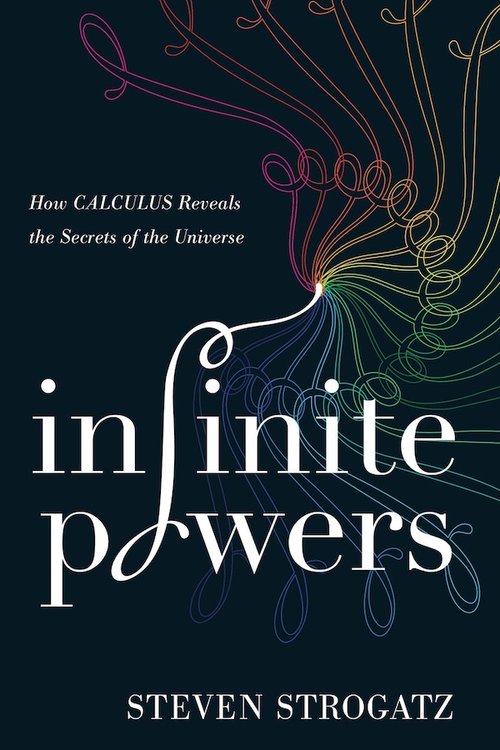
Calculus has a fierce reputation as complicated, abstract and difficult, but Steven Strogatz tells the true story of its beauty and simplicity. Starting with the Ancient Greeks, calculus has tantilised and fascinated humanity for millenia. Its applications grew from teaching us how to determine the area of a circle with only sand and a stick to safely launching rockets into space. Without it, we wouldnât have mobile phones, TV, GPS, or ultrasound. This book explains the history of our relationship with calculus, and its relationship with infinity.
Gödel, Escher, Bach: An Eternal Golden Braid by Douglas Hofstadter
Douglas Hofstadter's book is concerned directly with the nature of maps or links between formal systems. However, according to Hofstadter, the formal system that underlies all mental activity transcends the system that supports it. If life can grow out of the formal chemical substrate of the cell, if consciousness can emerge out of a formal system of firing neurons, then so too will computers attain human intelligence. Gödel, Escher, Bach is a wonderful exploration of fascinating ideas at the heart of cognitive science: meaning, reduction, recursion, and much more.
The Great Mathematical Problems by Ian Stewart
There are some mathematical problems whose significance goes beyond the ordinary - like Fermat's Last Theorem or Goldbach's Conjecture - they are the enigmas which define mathematics. This book explains why these problems exist, why they matter, what drives mathematicians to incredible lengths to solve them and where they stand in the context of mathematics and science as a whole. It contains solved problems - like the Poincaré Conjecture, cracked by the eccentric genius Grigori Perelman, who refused academic honours and a million-dollar prize for his work, and problems which, like the Riemann Hypothesis, remain baffling after centuries. Stewart is the guide to this mysterious and exciting world, showing how modern mathematicians constantly rise to the challenges set by their predecessors, as the great mathematical problems of the past succumb to the new techniques and ideas of the present.
Can you Solve my Problems? by Alex Bellos
This book contains 125 of the world's best brainteasers from the last two millennia, taking us from ancient China to medieval Europe, Victorian England to modern-day Japan, with stories of espionage, mathematical breakthroughs and puzzling rivalries along the way. Some solutions rely on a touch of cunning, others call for creativity, others need mercilessly logical thought. All are guaranteed to sharpen your mind!
Snowflake Seashell Star by Alex Bellos and Edmund Harriss
This book is the first in a series of mathematical colouring books by Alex Bellos and mathematical artist, Edmund Hariss. It is full of intricate and divinely beautiful illustrations, using patterns such as loops, waves and spirals. Stretch your artistic talents and embrace mathematics' aesthetic and conceptual exquisiteness. In 80 glorious images, Alex will teach you how to convey the wonder of mathematics through colour and design. Snowflake, Seashell, Star is an incredible celebration of the overlaps between mathematics and art, learning and play, concentration and calm.
A Mathematical Pandora's Box by Brian Bolt
Through his own experience, Brian Bolt has discovered a worldwide interest in mathematical puzzles. Bolt not only uses them to stimulate creative thinking, but also to open up new areas of mathematics to the reader. This book contains 142 activities: in addition to puzzles, there are games, tricks, models and explanation of various phenomena. They range from number manipulation, through happy and amicable numbers, coin puzzles, picnicking bears and pentominoes, to building shapes with cubes. There is a detailed commentary at the end of the book, giving solutions and explanations, together with the occasional follow-up problem.
The Number Devil by Hans Magnus Enzensberger
The quirky and unusual story of a young boy who hates maths at school, but who discovers a new side to the subject when he meets an unusual mathematician in a dream. This book takes you on an adventure through creative mathematical thinking, with great illustrations along the way.
The Indisputable Existence of Santa Claus by Hannah Fry and Thomas Oléron Evans
How do you apply game theory to select who should be on your Christmas shopping list? Can you predict Her Majesty's Christmas Message? Will calculations show Santa is getting steadily thinner - shimmying up and down chimneys for a whole night - or fatter - as he tucks into a mince pie and a glass of sherry in billions of houses across the world? Full of diagrams, sketches and graphs, beautiful equations, Markov chains and matrices, this book brightens up the bleak midwinter with stockingfuls of mathematical marvels. Mathematics has never been merrier.
Aha! Insight & aha! Gotcha by Martin Gardner
Previously published separately, the two books aha! Gotcha and aha! Insight have been combined as a single volume. The aha! books, as they are referred to by fans of Martin Gardner, contain 144 wonderful puzzles from the reigning king of recreational mathematics. In this combined volume, you will find puzzles ranging over geometry, logic, probability, statistics, number, time, combinatorics, and word play. Gardner calls these puzzles aha! problems, that 'seem difficult, and indeed are difficult if you go about trying to solve them in traditional ways. But if you can free your mind from standard problem solving techniques, you may be receptive to an aha! reaction that leads immediately to a solution. Don't be discouraged if, at first, you have difficulty with these problems. After a while you will begin to catch the spirit of offbeat, nonlinear thinking, and you may be surprised to find your aha! ability improving.'
My Best Mathematical and Logic Puzzles by Martin Gardner
Over a period of 25 years as author of the Mathematical Games column for Scientific American, Martin Gardner devoted a column every six months or so to short math problems or puzzles. This volume contains a rich selection of 70 of the best of these brain teasers, in some cases including references to new developments related to the puzzle. Now enthusiasts can challenge their solving skills and rattle their egos with such stimulating mind-benders as The Returning Explorer, The Mutilated Chessboard, Scrambled Box Tops, The Fork in the Road, Bronx vs. Brooklyn, Touching Cigarettes, and 64 other problems involving logic and basic math. Solutions are included.
The Thrilling Adventures of Lovelace and Babbage by Sydney Padua
In this book Sydney Padua transforms one of the most compelling scientific collaborations into a hilarious set of adventures, starring Ada Lovelace and Charles Babbage. This book presents a delightful alternate reality in which Lovelace and Babbage build the Difference Engine and use it to create runaway economic models, battle the scourge of spelling errors, explore the wider realms of mathematics and, of course, fight crime - for the sake of both London and science. Extremely funny and utterly unusual, this book comes complete with historical curiosities, extensive footnotes and never-before-seen diagrams of Babbage's mechanical, steam-powered computer. And ray guns.
The 'Uncle Albert' Series by Russell Stannard
A best selling science/adventure series, beginning with 'The Time and Space of Uncle Albert'. Uncle Albert and his intrepid niece, Gedanken, enter the dangerous and unknown world of a thought bubble. Their mission: to unlock the deep mysteries of Time and Space... Discover why you can't break the ultimate speed barrier, how to become older than your mother, how to put on weight without getting fat, and how to live forever without even knowing it. Other books in the series include: 'Black Holes and Uncle Albert' and 'Uncle Albert and the Quantum Quest'.
Professor Stewart's Cabinet of Mathematical Curiosities by Ian Stewart
A selection of mathematical puzzles, stories, tricks and short articles - great to read all in one go, or to dip into. The content varies between simple logic puzzles to introductions to more advanced topics such as the Four Colour Theorem, which tells us that we can colour in any map using only four colours, so that no bordering countries have the same colour.
Book of Curious & Interesting Mathematics by David Wells
A collection of strange mathematical facts and stories. This anthology covers a whole range of ages, maths and mathematicians, and includes probability paradoxes, jumbled Shakespearean sonnets, record-breaking monkeys and typewriters, and theories of big game hunting. Also featured are stories of people who looked for logical loopholes in the American Constitution or calmed their nerves with algebra.
Book of Curious & Interesting Puzzles by David Wells
This collection by best-selling author David Wells, a Cambridge math scholar and teacher, includes more than 560 puzzles, from the "mind sharpeners" of a medieval monk to the eitheenth-century Ladies' Diary, the Hindu Bhakshali manuscript, and riddles and popular rhymes. None require any mathematics beyond the most elementary algebra and geometry - and few require even that. Complete answers appear at the end.
Mathematics, Magic and Mystery by Martin Gardner
Famed puzzle expert Martin Gardner explains the mathematics behind a multitude of mystifying tricks: card tricks, stage "mind reading," coin and match tricks, counting out games, geometric dissections, etc. Each of these are actually demonstrations of probability, sets, number theory, topology and other braches of mathematics. No skill at sleight of hand is needed to perform the more than 500 tricks described in this book because mathematics guarantees their success.
How Many Socks Make a Pair? by Rob Eastaway
Can maths be creative? This book sets out to prove that it can, through a selection of short articles on surprising maths in everyday life. Through lots of intriguing problems, involving card tricks, polar bears and, of course, socks, Rob Eastaway shows shows how maths can demonstrate its secret beauties in even the most mundane of everyday objects.
Why do Buses Come in Threes? by Rob Eastaway and Jeremy Wyndham
With a foreword by Tim Rice, this book will change the way you see the world. Why is it better to buy a lottery ticket on a Friday? Why are showers always too hot or too cold? And what's the connection between a rugby player taking a conversion and a tourist trying to get the best photograph of Nelson's Column? These and many other fascinating questions are answered in this entertaining and highly informative book, which is ideal for anyone wanting to remind themselves - or discover for the first time - that maths is relevant to almost everything we do. Dating, cooking, travelling by car, gambling and even life-saving techniques have links with intriguing mathematical problems, as you will find explained here. Whether you have a PhD in astrophysics or haven't touched a maths problem since your school days, this book will give you a fresh understanding of the world around you.
Flatterland by Ian Stewart
In 1884, Edwin A. Abbott published âFlatlandâÂ; a brilliant novel about mathematics and philosophy that charmed and fascinated all of England. Now, Ian Stewart has written a fascinating, modern sequel to Abbott's book. Through larger-than-life characters and an inspired story line, "Flatterland" explores our present understanding of the shape and origins of the universe, the nature of space, time, and matter, as well as modern geometries and their applications.
The Liar Paradox and the Towers of Hanoi: 10 Greatest Math Puzzles of All Time by Marcel Danesi
Ever since the Sphinx asked his legendary riddle of Oedipus, riddles, conundrums, and puzzles of all sizes have kept humankind perplexed and amused. The Liar Paradox and the Towers of Hanoi takes die-hard puzzle experts on a tour of the world's most enduringly intriguing braintwisters, from Königsberg's Bridges and the Hanoi Towers to Fibonacci's Rabbits, the Four Color Problem, and the Magic Square. Each chapter introduces the basic puzzle, discusses the mathematics behind it, and includes exercises and answers plus additional puzzles similar to the one under discussion. Here is a veritable kaleidoscope of puzzling labyrinths, maps, bridges, and optical illusions that will keep aficionados entertained for hours.
The Number Mysteries by Marcus du Sautoy
An exploration of surprising ways maths occurs in our everyday lives, centred around five famous unsolved problems in mathematics. Topics include how to detect an art forgery, winning strategies in Monopoly, and how to crack a code. Sprinkled with games and links to interactive online content so you can try out some of the ideas for yourself!
Things to Make and Do in the Fourth Dimension by Matt Parker
This is the complete guide to exploring the fascinating world of maths you were never told about at school. Stand-up comedian and mathematician Matt Parker uses bizarre Klein Bottles, unimaginably small pizza slices, knots no one can untie and computers built from dominoes to reveal some of the most exotic and fascinating ideas in mathematics. Starting with simple numbers and algebra, this book goes on to deal with inconceivably big numbers in more dimensions than you ever knew existed. And always with something for you to make or do along the way.
How to Cut a Cake: and Other Mathematical Conundrums by Ian Stewart
In this book are twenty more curious puzzles and fantastical mathematical stories from one of the world's most popular and accessible writers on mathematics. This is a strange world of never-ending chess games, empires on the moon, furious fireflies, and, of course, disputes over how best to cut a cake. Each chapter - with titles such as, "How to Play Poker By Post" and "Repealing the Law of Averages" - presents a fascinating mathematical puzzle that is challenging, fun, and introduces the reader to a significant mathematical problem in an engaging and witty way. Illustrated with clever and quirky cartoons, each tale will delight those who love puzzles and mathematical conundrums.
Games and Mathematics by David Wells
The appeal of games and puzzles is timeless and universal. In this book, David Wells explores the fascinating connections between games and mathematics, proving that mathematics is not just about tedious calculation but imagination, insight and intuition. The first part of the book introduces games, puzzles and mathematical recreations, including knight tours on a chessboard. The second part explains how thinking about playing games can mirror the thinking of a mathematician, using scientific investigation, tactics and strategy, and sharp observation. Finally the author considers game-like features found in a wide range of human behaviours, illuminating the role of mathematics and helping to explain why it exists at all. This thought-provoking book is perfect for anyone with a thirst for mathematics and its hidden beauty; a good high school grounding in mathematics is all the background that is required, and the puzzles and games will suit pupils from 14 years.
Mathematical Puzzles: A Connoisseur's Collection by Peter Winkler
Collected over several years by Peter Winkler, dozens of elegant, intriguing challenges are presented in this book. The answers are easy to explain, but without this book, devilishly hard to find. Creative reasoning is the key to these puzzles. No involved computation or higher mathematics is necessary, but your ability to construct a mathematical proof will be severly tested - even if you are a professional mathematician. For the truly adventurous, there is even a chapter on unsolved puzzles.
Elastic Numbers by Daniel Griller
Beautifully crafted and immensely enjoyable, the problems in this book require minimal technical knowledge, being accessible to young secondary school pupils. However, there is an astonishing range in difficulty; while some of the problems are fairly straightforward, others are significantly tougher, with a great deal of ingenuity and clarity of thought needed to make progress. Whether you are a student preparing for a maths competition, an educational establishment seeking to supplement your problem solving resources, or an individual looking for a different sort of challenge, Elastic Numbers is a unique collection, and will push you to the very edge of your abilities.
Thinking Mathematically by Mason, Burton & Stacey
Thinking Mathematically is perfect for anyone who wants to develop their powers to think mathematically, whether at school, at university or just out of interest. This book is invaluable for anyone who wishes to promote mathematical thinking in others or for anyone who has always wondered what lies at the core of mathematics. Thinking Mathematically reveals the processes at the heart of mathematics and demonstrates how to encourage and develop them. Extremely practical, it involves the reader in questions so that subsequent discussions speak to immediate experience.
Finding Moonshine: A Mathematician's Journey Through Symmetry by Marcus Du Sautoy
This book tells the story of one of the biggest adventures in mathematics: the search for symmetry. This is the story of how humankind has come to its understanding of the bizarre world of symmetry - a subject of fundamental significance to the way we interpret the world around us. Our eyes and minds are drawn to symmetrical objects, from the sphere to the swastika, from the pyramid to the pentagon. 'Symmetry' is all-pervasive: in chemistry the concept of symmetry explains the structure of crystals; in evolutionary biology, the natural world exploits symmetry in the fight for survival; symmetry and the breaking of symmetry are central to ideas in art, architecture and music; the mathematics of symmetry is even exploited in industry, for example to find efficient ways to store more music on a CD or to keep your mobile phone conversation from cracking up through interference.
Mathematics for the Curious by Peter Higgins
When do the hands of a clock coincide? How likely is it that two children in the same class will share a birthday? How do we calculate the volume of a doughnut? Mathematics for the Curious provides anyone interested in mathematics with a simple and entertaining account of what it can do. Author Peter Higgins gives clear explanations of the more mysterious features of childhood mathematics as well as novelties and connections that prove that mathematics can be enjoyable and full of surprises. Topics include: the truth about fractions, ten questions and their answers, and the golden ratio. Higgins poses entertaining puzzles and questions tempting the reader to ponder math problems with imagination instead of dread. Mathematics for the Curious is an accessible introduction to basic mathematics for beginning students and a lively refresher for adults.
Mathematics for the Imagination by Peter Higgins
Mathematics for the Imagination provides an accessible and entertaining investigation into mathematical problems in the world around us. From world navigation, family trees, and calendars to patterns, tessellations, and number tricks, this informative and fun book helps you to understand the maths behind real-life questions and rediscover your arithmetical mind. This is a highly involving book which encourages the reader to enter into the spirit of mathematical exploration.
Mathematics and the Physical World by Morris Kline
A stimulating account of development of basic mathematics from arithmetic, algebra, geometry and trigonometry, to calculus, differential equations and non-Euclidean geometries. Also describes how maths is used in optics, astronomy, motion under the law of gravitation, acoustics, electromagnetism, and other aspects of physics.
Mathematics: A Very Short Introduction by Timothy Gowers
Tim Gowers is a Fields Medalist (the Fields medal is the mathematical equivalent of the Nobel prize), so it is not at all surprising that what he writes is worth reading. What is surprising is the ease and charm of his writing. He touches lightly many areas of mathematics, some that will be familiar (Pythagoras) and some that may not be (manifolds) and has something illuminating to say about all of them.
Excursions in Geometry by C. Stanley Ogilvy
In this book, Professor Ogilvy demonstrates the mathematical challenege and satisfaction to be had from geometry, the only requirement being two simple implements (straight-edge and compass) and a little thought. Topics including harmonic division and Apollonian circles, inversive geometry, the hexlet, conic sections, projective geometry, the Golden Section and angle trisection are addressed in a way that brings out the true intellectual excitement inherent in each. Also included are some unsolved problems of modern geometry.
Excursions in Mathematics by C. Stanley Ogilvy
This book offers a fascinating glimpse into the world of mathematics and mathematicians. It is designed for the reader who has no advanced mathematical background of special aptitude, but who wants to acquaint him or herself with the intellectually stimulating and aesthetically satisfying aspects of the subject. After illuminating the role of the mathematician and dispelling several popular misconceptions about the nature of mathematics, Professor Ogilvy takes you on a lively tour of the four basic branches of the subject: number theory, algebra, geometry and analysis. Focusing on the interesting, and even amusing, aspects of mathematics, he points out the interconnections between the branches and presents mathematics as a vital subject whose frontiers are continually expanding. Many illustrations and examples illuminate classic aspects of the subject as well as recent advances.
Excursions in Number Theory by C. Stanley Ogilvy and John Anderson
This delightful volume, by two well-known mathematicians, invites readers to join a challenging expedition into the mystery and magic of number theory. No special training is needed - just high school mathematics, a fondness for figures and an inquisitive mind. Beginning with familiar notions, the authors skillfully transport the reader to higher realms of mathematics, developing the necessary concepts along the way. Included are thorough discussions of prime numbers, number patterns, irrationals and iterations and calculating prodigies, among other topics.
Q.E.D. - Beauty in Mathematical Proof by Burkard Polster
Which famous proof did Archimedes inscribe on his tombstone? How and why do knots make perfect pentagons? Have you ever seen a proof so completely that it is just obvious? In this delicious little book, top down-under mathemagician Dr. Polster presents many of the most visually intuitive and exciting proofs from the dusty annuals of mathematical history. You can test your ability to follow the logic, leap into mathemagnosis and experience eureka-moment after eureka-moment.
How to Solve It by George Polya
A perennial bestseller by eminent mathematician G. Polya, How to Solve It will show anyone in any field how to think straight. In lucid and appealing prose, Polya reveals how the mathematical method of demonstrating a proof or finding an unknown can be of help in attacking any problem that can be "reasoned" out - from building a bridge to winning a game of anagrams. Generations of readers have relished Polya's deft - indeed, brilliant - instructions on stripping away irrelevancies and going straight to the heart of the problem.
The Joy of X: A Guided Tour of Mathematics from One to Infinity by Steven Strogatz
Maths is everywhere, often where we don't even realise. Award-winning professor Steven Strogatz acts as our guide as he takes us on a tour of numbers that - unbeknownst to the unitiated - connect pop culture, literature, art, philosophy, current affairs, business and even every day life. In The Joy of X, Strogatz explains the great ideas of maths - from negative numbers to calculus, fat tails to infinity - with clarity, wit and insight. He is the maths teacher you never had and this book is perfect for the smart and curious, the expert and the beginner.
Problem-Solving Strategies In Mathematics: From Common Approaches To Exemplary Strategies by Alfred S Posamentier and Stephen Krulik
This book introduces ten problem-solving strategies by first presenting the strategy and then applying it to problems in elementary mathematics. In so doing, the common less efficient approach is first mentioned and then the effective strategy is shown. Elementary mathematics is used so that the reader can focus on the strategy and not be distracted by some more sophisticated mathematics.
1089 and All That: A Journey into Mathematics by David Acheson
David Acheson's extraordinary little book makes mathematics accessible to everyone. From very simple beginnings he takes us on a thrilling journey to some deep mathematical ideas. On the way, via Kepler and Newton, he explains what calculus really means, gives a brief history of pi, and even takes us to chaos theory and imaginary numbers. Every short chapter is carefully crafted to ensure that no one will get lost on the journey. Packed with puzzles and illustrated by world famous cartoonists, this is one of the most readable and imaginative books on mathematics ever written.

An Introduction to Mathematical Reasoning by Peter Eccles
The purpose of this book is to introduce the basic ideas of mathematical proof to students. The emphasis is on helping the reader in understanding and constructing proofs and writing clear mathematics. This is achieved by exploring set theory, combinatorics and number theory, topics which include many fundamental ideas which are part of the tool kit of any mathematician. This material illustrates how familiar ideas can be formulated rigorously, provides examples demonstrating a wide range of basic methods of proof, and includes some of the classic proofs.
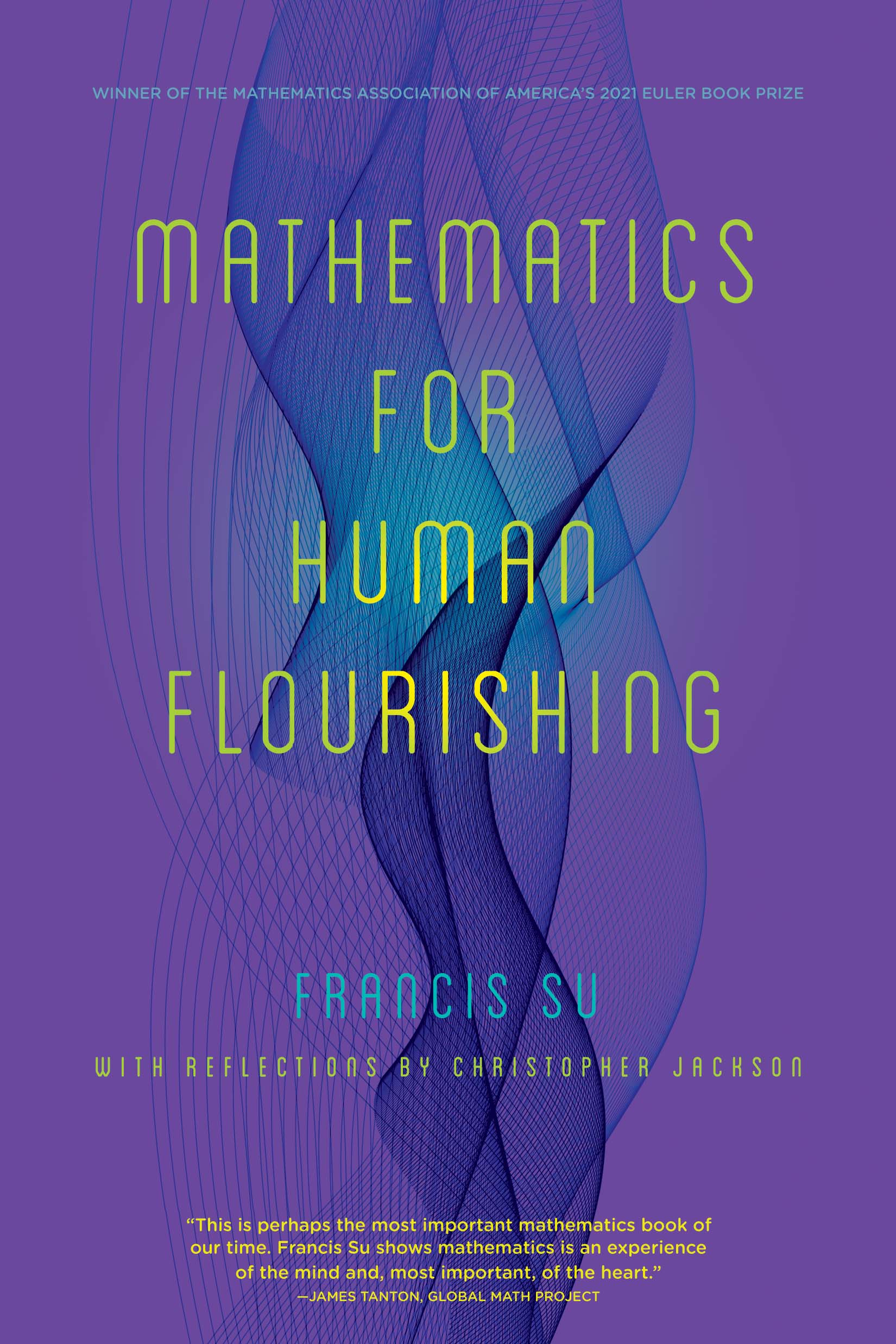
Can the study of mathematics enrich the heart as well as the mind? Francis Su explains how humans crave logic, beauty, truth and play, and that searching for these in mathematics is not only rewarding, but builds virtues in us that help us be better individuals and members of society. The book includes puzzles to draw everyone in to the enjoyment of mathematics, as part of his vision that mathematics should be shared by everyone.
What is Mathematics? by Richard Courant, Herbert Robbins and Ian Stewart
Written for beginners and scholars, for students and teachers, for philosophers and engineers, this book is a sparkling collection of mathematical gems that offers an entertaining and accessible portrait of the mathematical world. Covering everything from natural numbers and the number system to geometrical constructions and projective geometry, this fascinating survey allows readers to delve into mathematics as an organic whole rather than an empty drill in problem solving. With chapters largely independent of one another and sections that lead upward from basic to more advanced discussions, readers can easily pick and choose areas of particular interest without impairing their understanding of subsequent parts.
Towards Higher Mathematics: A Companion by Richard Earl
Containing a large and varied set of problems, this rich resource will allow students to stretch their mathematical abilities beyond the school syllabus, and bridge the gap to university-level mathematics. Many proofs are provided to better equip students for the transition to university. The author covers substantial extension material using the language of sixth-form mathematics, thus enabling students to understand the more complex material. There are over 1500 carefully graded exercises, with hints included in the text, and solutions available online. Historical and contextual asides highlight each area of mathematics and show how it has developed over time.
The Art of the Infinite by Robert and Ellen Kaplan
This book unlocks the secrets of maths - revealing it to be our lost, native language, as much a part of us as the words we use every day. Number and form are the essence of our world: from the patterns of the stars to the pulses of the market, from the beats of our hearts to catching a ball or tying our shoelaces. Drawing on science, literature, history and philosophy, this book makes the rich patterns of maths brilliantly clear.
Algorithmic Puzzles by Anany & Maria Levitin
In this book, Anany and Maria Levitin use many classic brainteasers as well as newer examples from job interviews with major corporations to show readers how to apply analytical thinking to solve puzzles requiring well-defined procedures. The book's unique collection of puzzles is supplemented with carefully developed tutorials on algorithm design strategies and analysis techniques intended to walk the reader step-by-step through the various approaches to algorithmic problem solving. Mastery of these strategies - exhaustive search, backtracking, and divide-and-conquer, among others - will aid the reader in solving not only the puzzles contained in this book, but also others encountered in interviews, puzzle collections, and throughout everyday life. Each of the 150 puzzles contains hints and solutions, along with commentary on the puzzle's origins and solution methods. Readers with only middle school mathematics will develop their algorithmic problem-solving skills through puzzles at the elementary level, while seasoned puzzle solvers will enjoy the challenge of thinking through more difficult puzzles.
The Mathematics of Games and Gambling by Edward Packel
This book introduces and develops some of the important and beautiful elementary mathematics needed for rational analysis of various gambling and game activities. Most of the standard casino games (roulette, craps, blackjack, keno), some social games (backgammon, poker, bridge) and various other activities (state lotteries, horse racing) are treated in ways that bring out their mathematical aspects. The mathematics developed ranges from the predictable concepts of probability, expectation, and binomial coefficients to some less well-known ideas of elementary game theory. Game-related exercises are included and solutions to some appear at the end of the book.
How to Study for a Mathematics Degree by Lara Alcock
Every year, thousands of students go to university to study mathematics. Many of these students are extremely intelligent and hardworking, but even the best will, at some point, struggle with the demands of making the transition to advanced mathematics. The mathematics shifts in focus from calculation to proof, so students are expected to interact with it in different ways. These changes need not be mysterious - mathematics education research has revealed many insights into the adjustments that are necessary - but they are not obvious and they do need explaining. This book translates these research-based insights into practical advice for a student audience. It covers every aspect of studying for a mathematics degree, from the most abstract intellectual challenges to the everyday business of interacting with lecturers and making good use of study time.
How to Think Like a Mathematician by Kevin Houston
Looking for a head start in your undergraduate degree in mathematics? This friendly companion will ease your transition to real mathematical thinking. Working through the book you will develop an arsenal of techniques to help you unlock the meaning of definitions, theorems and proofs, solve problems, and write mathematics effectively. All the major methods of proof - direct method, cases, induction, contradiction and contrapositive - are featured. Concrete examples are used throughout, and you'll get plenty of practice on topics common to many courses such as divisors, Euclidean algorithms, modular arithmetic, equivalence relations, and injectivity and surjectivity of functions. With over 300 exercises to help you test your progress, you'll soon learn how to think like a mathematician.
Select your cookie preferences
We use cookies and similar tools that are necessary to enable you to make purchases, to enhance your shopping experiences and to provide our services, as detailed in our Cookie notice . We also use these cookies to understand how customers use our services (for example, by measuring site visits) so we can make improvements.
If you agree, we'll also use cookies to complement your shopping experience across the Amazon stores as described in our Cookie notice . Your choice applies to using first-party and third-party advertising cookies on this service. Cookies store or access standard device information such as a unique identifier. The 103 third parties who use cookies on this service do so for their purposes of displaying and measuring personalized ads, generating audience insights, and developing and improving products. Click "Decline" to reject, or "Customise" to make more detailed advertising choices, or learn more. You can change your choices at any time by visiting Cookie preferences , as described in the Cookie notice. To learn more about how and for what purposes Amazon uses personal information (such as Amazon Store order history), please visit our Privacy notice .
- Science, Nature & Maths
- Biological Sciences
Sorry, there was a problem.

Download the free Kindle app and start reading Kindle books instantly on your smartphone, tablet or computer – no Kindle device required .
Read instantly on your browser with Kindle for Web.
Using your mobile phone camera - scan the code below and download the Kindle app.

Image Unavailable

- To view this video download Flash Player

Follow the author

How to Solve It: A New Aspect of Mathematical Method Paperback – 26 April 1990
The definitive guide to mathematical problem solving, from one of the great teachers of the twentieth century George Pólya's perennial bestseller has inspired generations around the world to think more clearly. Brilliantly showing how 'there is a grain of discovery in the solution of any problem', his strategies for mathematical problem-solving - from finding weak points to squeezing the data - will help get to the bottom of any puzzle. 'A superb book on how to think fresh thoughts ... A walk inside Pólya's mind as he builds up maxims on how to comprehend a problem, how to build up a strategy, and then how to test it' David Bodanis, Guardian 'Everyone should know the work of George Polya on how to solve problems' Marvin Minsky 'A classic ... It is the outcome of careful and informed deliberation by one of the great teachers among the ranks of research mathematicians' Ian Stewart, author of Does God Play Dice? 'Every prospective teacher should read it' E. T. Bell
- Print length 272 pages
- Language English
- Publisher Penguin
- Publication date 26 April 1990
- Dimensions 19.7 x 12.9 x 1.84 cm
- ISBN-10 9780140124996
- ISBN-13 978-0140124996
- See all details
Product description
About the author, product details.
- ASIN : 0140124993
- Publisher : Penguin; 2nd ed edition (26 April 1990)
- Language : English
- Paperback : 272 pages
- ISBN-10 : 9780140124996
- ISBN-13 : 978-0140124996
- Dimensions : 19.7 x 12.9 x 1.84 cm
- 17 in Higher Mathematical Education
- 18 in Recreational Mathematics
- 21 in Mathematical Games
About the author
Georg polya.
Discover more of the author’s books, see similar authors, read author blogs and more
Customer reviews
Customer Reviews, including Product Star Ratings, help customers to learn more about the product and decide whether it is the right product for them.
To calculate the overall star rating and percentage breakdown by star, we don’t use a simple average. Instead, our system considers things like how recent a review is and if the reviewer bought the item on Amazon. It also analyses reviews to verify trustworthiness.
- Sort reviews by Top reviews Most recent Top reviews
Top reviews from United Kingdom
There was a problem filtering reviews right now. please try again later..
Top reviews from other countries
- UK Modern Slavery Statement
- Amazon Science
- Sell on Amazon
- Sell on Amazon Business
- Sell on Amazon Handmade
- Associates Programme
- Fulfilment by Amazon
- Seller Fulfilled Prime
- Advertise Your Products
- Independently Publish with Us
- Host an Amazon Hub
- › See More Make Money with Us
- Amazon Platinum Mastercard
- Amazon Classic Mastercard
- Amazon Money Store
- Amazon Currency Converter
- Payment Methods Help
- Shop with Points
- Top Up Your Account
- Top Up Your Account in Store
- COVID-19 and Amazon
- Track Packages or View Orders
- Delivery Rates & Policies
- Returns & Replacements
- Manage Your Content and Devices
- Amazon Mobile App
- Customer Service
- Accessibility
- Conditions of Use & Sale
- Privacy Notice
- Cookies Notice
- Interest-Based Ads Notice

Book series
Problem Books in Mathematics
About this book series.
- Peter Winkler
Book titles in this series
Mathematical explorations for young minds.
Adventures on the Island of Oxisz
- Bálint Hujter
- Dániel Lenger
- Gábor Szűcs
- Copyright: 2024
Available Renditions
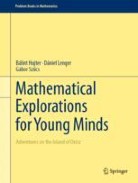
The Indiana College Mathematics Competition (2001–2023)
Celebrating the Teamwork Spirit and the Peter Edson Trophy
- Adam Coffman
- Justin Gash
- Rick Gillman
- John Rickert
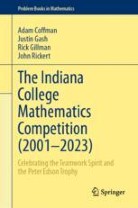
Selection Tests in Number Theory for Mathematical Olympiads
- Corneliu Mănescu-Avram
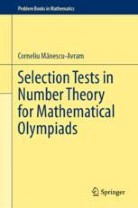
Functional Analysis and Operator Theory
- Volodymyr Brayman
- Andrii Chaikovskyi
- Oleksii Konstantinov
- Alexander Kukush
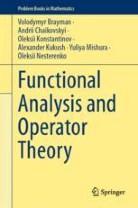
More (Almost) Impossible Integrals, Sums, and Series
A New Collection of Fiendish Problems and Surprising Solutions
- Cornel Ioan Vălean
- Copyright: 2023
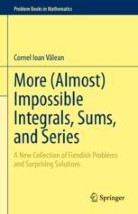
Publish with us
Abstracted and indexed in.
- Mathematical Reviews
- Norwegian Register for Scientific Journals and Series
Maths My Way - Check out the Teaching Slides, Digital, Book & Planning! Try them out
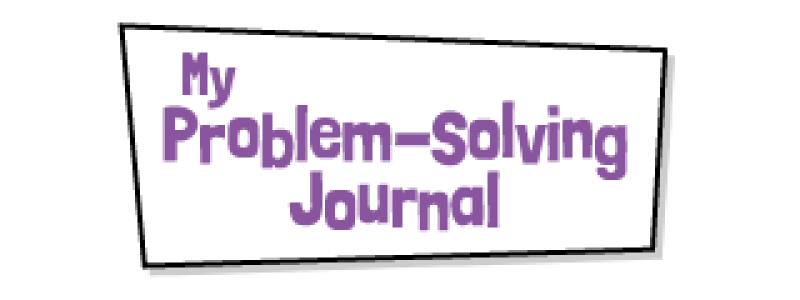
Rich mathematical tasks to develop powerful mathematical thinking
Flick through the eBooks for My Problem-Solving Journal and try out the sample problems
Overview Books Teaching Notes
Author Team Webinar Videos
Check out this short overview video of My Problem-Solving Journal!

My Problem-Solving Journal for rich mathematical tasks
- Inspire a love of maths with real-life scenarios and problems that are relevant to children
- Deepen conceptual understanding and explore the big ideas of mathematics
- Challenge all children at their level with low threshold high ceiling tasks
- A bank of age and stage appropriate problems at your fingertips
- Matched to the key topics in core maths programmes, including Planet Maths and Busy at Maths
- Teaching notes offer a comprehensive guide on how to approach each problem
Check out the books
Maths Week Challenge
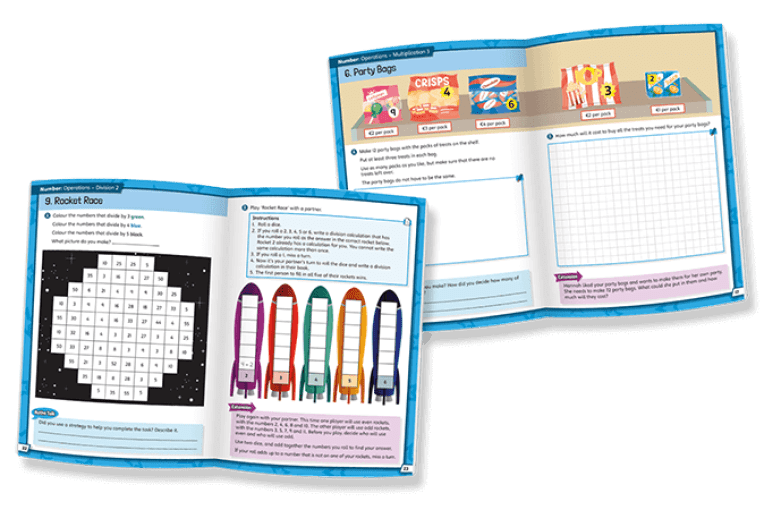
Explore one problem in depth each week
- Strand and Strand Unit labels make it easy to map problems to the content you are covering in class.
- Maths Talk boxes encourage meaningful maths discussion.
- Top Tips provide helpful hints and prompts.
- Extension activities offer further opportunities to explore each topic.
- Dedicated workspaces scaffold children and create a record of learning.
Join teacher and author, Patrick Neary, to explore mathematical modeling in the primary classroom. See how seamlessly mathematical modeling can be emphasised through context-rich, open-ended problems, such as those found in My Problem-Solving Journal.
Join teacher and author, Elaine Dillion, to explore what problem-solving looks like for younger children . Examine how rich, meaningful tasks, such as those found in My Problem-Solving Journal, can be used to enrich children’s mathematical learning.
Teaching Notes

Teaching notes
Online teaching notes accompanying each problem:
- Provide an overview of the task
- List the specific skills addressed
- Guide teachers with specific teaching points
- Include anticipated student responses and possible solutions
See sample Teaching Notes
- We have created this handy guide for you to reference when using My Problem-Solving Journal in the classroom
My Problem-Solving Journal in Three Simple Steps
"It provides everything teachers need to help children in their class become critical thinkers and problem solvers"
Patrick Neary, experienced teacher and one of the authors of My Problem Solving Journal explains how MPSJ provides rich mathematical tasks to develop powerful mathematical thinking, and inspires a love of maths with real-life scenarios and problems that are relevant to children.
Author Team

Author team
All of our authors are currently teaching different classes.
Patrick Neary is the author of 5th & 6th Class, and Series Editor of the programme. He holds a M.Ed., specialising in Mathematics Education, from DCU, where he has also lectured part-time. Patrick has worked closely with Maths4All to promote best practice in Maths Education.
Grace Lynch is the author of 3rd & 4th Class. She holds a M.Ed., specialising in Mathematics Education, from DCU, and has supervised undergraduate dissertations for students specialising in Mathematics Education in Marino Institute.
Elaine Dillion is the author of 1st & 2nd Class. She holds a M.Ed. from Maynooth University, where her thesis focused on exploring an effective use of play in the teaching and learning of mathematics. Elaine is an active participant and contributor to Maths4All.
Get in touch with your local Rep
Request a Sales Callback
Copyright © Folens Publishers 2024. All rights reserved
Stack Exchange Network
Stack Exchange network consists of 183 Q&A communities including Stack Overflow , the largest, most trusted online community for developers to learn, share their knowledge, and build their careers.
Q&A for work
Connect and share knowledge within a single location that is structured and easy to search.
What book would you recommend to significantly improve my problem solving skills? [duplicate]
I am a straight-A student (going to the ninth grade) and do nearly perfectly in math, the problem is that my school (like many other schools I suppose) makes you memorize the steps, the formulas, etc. and just apply that to similar questions, and since I’ll probably be opting for IGCSE and eventually A levels, I find it necessary to significantly improve my critical thinking skills because I never had adequate practice for that. I’m sorry for all that background, but I would like your recommendation of books/websites that would help me.
Do you think these books are appropriate:
- How to Solve It by Polya
- The Art of Problem Solving Vol. 1: The Basics & How to Solve It Vol. 2: And Beyond
- Problem Solving Strategies by Engel
- Problem-Solving through Problems
- Mathematical Discovery: On Understanding, Learning and Teaching Problem Solving
Do you think that Solving Mathematical Problems by Tao is enough for me to significantly improve?
- algebra-precalculus
- reference-request
- problem-solving
- book-recommendation
- $\begingroup$ Probably I will get a personal tutor once I actually begin A-levels, but for now I just wanted to acquire methods and techniques on problem-solving and do some practice. Do you have any book recommendations? $\endgroup$ – Tala Sadaqa Commented May 27, 2020 at 20:35
- $\begingroup$ If you want to really make a name for yourself, talk to your math teacher and ace the Putnam exam while in high school: amazon.com/William-Lowell-Putnam-Mathematical-Competition/dp/… $\endgroup$ – David G. Stork Commented May 27, 2020 at 20:43
- $\begingroup$ Thank you for your comment. I am not that of a math lover, so I don't really want to make a name for myself or ace the Putnam Exams. However, I like math and now how essential mastering it is, so I am ready to set time aside and seriously work on it. I checked the book you suggested, and it seems too advanced, don't you think? $\endgroup$ – Tala Sadaqa Commented May 27, 2020 at 21:22
- $\begingroup$ Hello Tala. I understand that you've learnt the material up to about Year 8 of a curriculum similar to that of England. Tao's and Engel's books are certainly too advanced for that. I'm not a big fan of the Art of Problem Solving series, though they might be at your level. I would suggest that there are two (non-mutually exclusive) kinds of reading that could be beneficial. Firstly, there are some good problem books for roughly your year level. The best I know of is Mathematical Circles by Fomin and Itenberg. Secondly, you could bring your knowledge of algebra up to about GCSE level (though.. $\endgroup$ – Anonymous Commented May 27, 2020 at 22:36
- $\begingroup$ not necessarily following a specific curriculum), after which your options for collateral reading on interesting mathematical subjects will expand considerably. Suitable textbooks for this might be Basic Mathematics by Serge Lang or Algebra the Easy Way by Douglas Downing, though which one you choose isn't terribly important. If I've misunderstood and you are in fact already at GCSE level in your knowledge, then please say so and I'll make different recommendations. $\endgroup$ – Anonymous Commented May 27, 2020 at 22:40
3 Answers 3
The ruling class doesn't want critical thinkers. It wants trained workers. Apparently you've outstripped your school's ability to educate you. So move on from the Dummy Down Dunce Dance school you're currently attending. Learn math on your own. Choose the topics that most interest you and study them. That is where you'll excel. Skip that I've got to curriculum, it's just baggage. If you bump into something that you like but lack the background, then you'll be motivated to study the background material. Skip that high school stuff and look for a community college that'll accept you. You'll likely be happier there. Visit a community college, meet with a math teacher, and find what opportunities be there for you. I have a friend who got so bored with high school, she attended a community college instead where she was happier. I also know a self tutored math student who was accepted into a liberal arts college based upon his success in a college math exam. PS. Skip the most modern text books and look for books written for mathematicians where the cook book method is ignored in preference to concepts, theorems and proofs. Good luck with your struggle living in a country where being of above average intelligence is a handicap and with your new adventure beyond high school into adult education. PSS. If you want a tutor, I'll give you a throwaway email address by which you can contact me. I have successful experience tutoring both elbow to elbow and by phone. Being retired, I've no need of payment. I also suggest you use this web cite for questions and when you get stuck understanding a concept or a formula.
- $\begingroup$ "If you bump into something that you like but lack the background, then you'll be motivated to study the background material." Can't agree with this more. $\endgroup$ – BLUC Commented May 28, 2020 at 5:20
- 3 $\begingroup$ Could you perhaps focus on the question asked and leave commentary and asides away. $\endgroup$ – quid Commented May 28, 2020 at 10:46
- $\begingroup$ I would be very cautious when a student shows "math" talent. I would really want him/her to differentiate between math capability and the nature of rigorous math. In my opinion, Olympic math/class math is ruining most children's interest in going deeper. On the other hand, rigorous logic education enables everyone to learn math on their own, and allows them to move forward as he/she wishes. Some of them may become mathematicians, and some of them know when to stop and turn to other jobs (engineers, for example), while still keep a good sense of math. $\endgroup$ – Ziqi Fan Commented Dec 31, 2020 at 5:01
Yes, I think the Art of Problem Solving is a good book series.
I have not heard of Solving Mathematical Problems by Tao, though, but I do know that you can practice your mathematics skills by completing AMC Tests from past years here.
https://artofproblemsolving.com/wiki/index.php/AMC_Problems_and_Solutions
I wrote a book that may be helpful, as it covers the mental process of problem solving, something rarely taught in school. It has a series of engineering problems solved with the top-down approach, as a boot camp for the reader to get the hang of it. It's titled "The Top-Down Approach to Problem Solving", ISBN 979-8464073296. You can find it on amazon as paperback and ebook. I hope you like it.
Not the answer you're looking for? Browse other questions tagged algebra-precalculus reference-request problem-solving book-recommendation .
- Featured on Meta
- We spent a sprint addressing your requests — here’s how it went
- Upcoming initiatives on Stack Overflow and across the Stack Exchange network...
Hot Network Questions
- Did any other European leader praise China for its peace initiatives since the outbreak of the Ukraine war?
- How does light beyond the visible spectrum relate to color theory?
- Car stalls when coming to a stop except when in neutral
- Of "ils" and "elles", which pronoun is, grammatically speaking, used to refer to a group with an overwhelming female majority?
- inner xsep/ysep 0 not work as expected
- Any philosophical works that explicitly address the heat death of the Universe and its philosophical implications?
- Is prescreening not detrimental for paid surveys?
- Help understanding the implications of Security Breach section of an NDA
- I am trying to calculate Albumin-Creatinine ratios for research, why is the result so high?
- Are there any reasons I shouldn't remove this odd nook from a basement room?
- ArXiv submission on hold for 11 days. Should I inquire via moderation support or wait longer?
- How are GameManagers created in Unity?
- Is this a Hadamard matrix?
- Does 誰と mean 誰とも?
- Whom did Rashi call "oker harim"
- A web site allows upload of pdf/svg files, can we say it is vulnerable to Stored XSS?
- Can I give a potential employer the LinkedIn address of my previous employer instead of his email address?
- Sargent-Welch 1947 atomic model kit, design and use
- What enforcement exists for medical informed consent?
- Is it possible to go back to the U.S. after overstaying as a child?
- Go the Distance
- Should I apologise to a professor after a gift authorship attempt, which they refused?
- As a DM, what should I do if a person decides to play a rogue?
- Mechanism behind a pink human skeleton
Exploring maths through problem solving
Apsmo building confidence in maths problem solving.
This APSMO resource book is a practical handbook for teachers and parents of Years 5 – 8 students.
APSMO Store
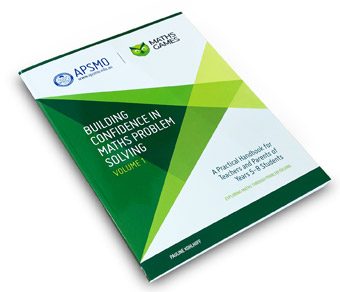
“Providing all students opportunities to engage with challenging mathematical tasks is critical to their development of reasoning and problem solving skills. The problems in this book are designed and sequenced to allow teachers to select optimally challenging problems for students from diverse backgrounds. Importantly, the beautifully illustrated solutions reinforce to students that mathematics can be creative, meaningful and engaging. I love how many problems can be solved using more than one solution strategy. Multiple solution strategies encourage students to look at mathematics from different perspectives and to reflect more deeply on their own strategies.” Janette Bobis, Professor of Mathematics Education, The University of Sydney
“This is a treasure trove of mathematical puzzles and problems, but much more as we see a selection of different strategies for each problem. I found myself immediately reaching for pen and paper to see whether I could use more than one strategy each time. The layout and colours add to the appeal and add depth to the explanations. I’ll be purchasing many copies for gifts for problem solvers of all ages!” Associate Professor Mary Coupland, University of Technology Sydney, Past President MANSW and AAMT
“Building Confidence in Maths Problem Solving is an excellent resource for instructors to motivate their students while sharpening their skills in problem solving. A visually pleasing (and colour-coded) volume insofar as each problem and its solutions are limited to a single page, yet thoroughly explained and linked to one or more of the ten strategies used throughout the book. And, if that isn’t good enough, lessons may be constructed to focus on a single method by simply referring to the strategies index. Everyone who coaches students should have access to this resource guide, whether they participate in math competitions or just want their students to excel at meeting the challenges raised by maths word problems.” Nicholas J Restivo, Executive Director, Mathematical Olympiads for Elementary & Middle-Schools - MOEMS™
Building Confidence in Maths Problem Solving: A Practical Handbook for Teachers and Parents of Years 5 – 8 Students: Volume 1
By Dr Pauline Kohlhoff
Australian Edition. © 2021.
ISBN : 9780975731659
$ 49.95 + postage
About The Book
The resources contained in this new, larger format, APSMO publication are designed specifically to support the teaching of mathematical problem solving to mainstream students in Years 5 to 8.
As teachers and instructors, we know that problems can often be solved in many different ways. With 15 sets of problems and multiple solutions for each problem, this book takes students on a problem solving journey.
Starting with less cognitively demanding problems, the book is sequenced by difficulty and gradually progresses to a more challenging level. The solutions are beautifully presented and illustrated to showcase the application of various problem solving strategies, and a number of unique activity templates are provided throughout the book to assist with teaching.
Importantly, all of the problems are indexed and colour coded according to the problem solving strategy used, which allows teachers and students to practise individual strategies such as:
- Guess, check and refine
- Draw a diagram
- Find a pattern
- Build a table
- Work backwards
- Make an organised list
- Solve a simpler, related problem
- Eliminate all but one possibility
- Convert to a more convenient shape
- Divide a complex shape
Building Confidence in Maths Problem Solving lays the foundations of effective problem solving, helps to build confidence and provides an opportunity for mainstream students to see mathematics as a fun, creative and engaging activity.

Contact Details
- Phone: +61 2 9114 9255
- Fax: +61 2 9114 9233
- Email: [email protected]
- Post: PO Box 629 WAHROONGA NSW 2076
Competitions & Programs
- Maths Quest Years 1-2
- Maths Explorer Years 3-4
- Maths Games Years 5-6
- Maths Games Years 7-8
- Maths Olympiad Years 5-6
- Maths Olympiad Years 7-8
Teacher & Parent Resources
- Resource Books
- Sample Questions
- Problem of the Week
- Latest News
Professional Learning
©2024 APSMO INC | All Rights Reserved | ABN : 25 097 230 949 | Privacy Statement | Terms & Conditions | APSMO Inc. is a not-for-profit organisation
Member Sign In

Problem Solving Picture Books for Math
Problem-solving picture books can boost your children’s understanding of how to solve math problems and enhance general problem-solving skills.
Both types of problem-solving involve deep thinking to recognize an issue and think through possible solutions to get to a resolution. We tend to call general problem-solving “logical thinking”. If you’re looking for information about that type of problem-solving, click here .
Mathematical Problem-Solving
In this post, we will focus on mathematical problem-solving. In math, you might need to literally solve a problem (or an equation) and need to figure out how to do that. Or, you might be faced with a mathematical question that isn’t so cut and dry as an equation. Sometimes, these are word problems, and other times they are intellectual challenges similar to the following:
“A farmer has pigs and chickens. In total, he owns 20 animals. If there are 54 legs, how many of each animal live on the farm?” (P.S. The answer is 7 pigs and 13 chickens.)
Luckily, there are some general strategies that tend to work well to get to any math solution before a child has the handy-dandy tool of algebra to help. They include:
- Examining the question to find key ideas.
- Choosing an appropriate strategy. (See below.)
- Doing the math.
- Rechecking to see if it worked.
There are a variety of wonderful strategies that can help depending on the problem at hand and the preferred learning style of a student. They include:
- Making a list.
- Drawing a picture.
- Acting it out.
- Making a model.
- Making a table.
- Identifying a pattern.
- Writing a number sequence.
- Solving a simpler, related problem.
- Working backward.
- Guessing and checking.
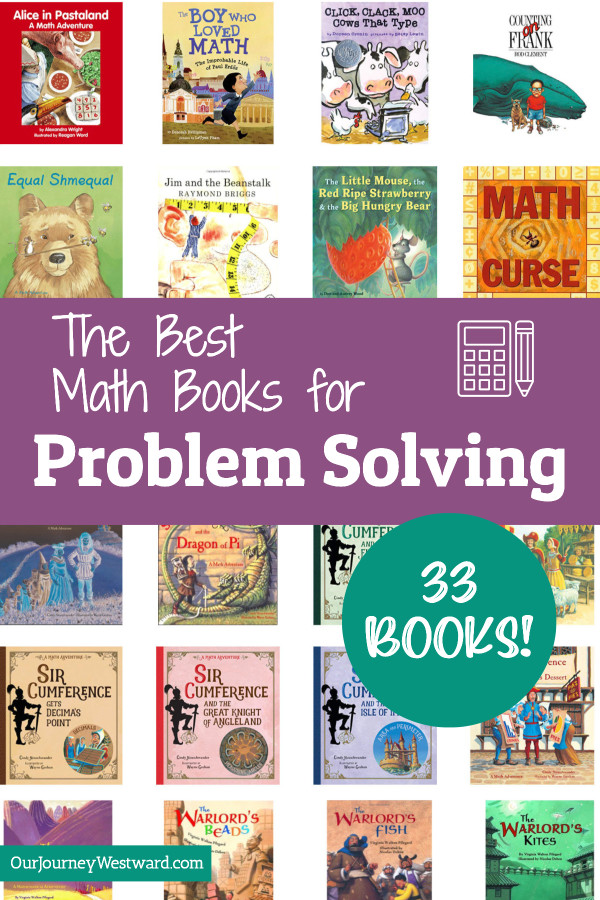
This post contains affiliate links.
Lucky for us, there are plenty of problem-solving picture books that demonstrate the processes of problem-solving in a variety of ways through engaging stories and real-life examples. They can help a student who struggles with thinking beyond basic math equations to learn a new way of thinking on a deeper level!
Problem-Solving Picture Books

- Alice in Pastaland by Alexandra Wright
- The Boy Who Loved Math by Deborah Heiligman
- Click, Clack, Moo Cows That Type by Doreen Cronin
- Counting on Frank by Rod Clement
- Equal Shmequal by Virginia Kroll
- Jim and the Beanstalk by Raymond Briggs
- The Little Mouse, the Red Ripe Strawberry, and the Big Hungry Bear by Audrey Wood
- Math Curse by Jon Scieszka
- Once Upon a Dime by Nancy Kelly Allen
- The Paper Bag Princess by Robert Munsch
- The Poky Little Puppy by Janette Sebring Lowrey
- Rosie Revere, Engineer by Andrea Beaty
- Sold! by Nathan Zimelman
- Spaghetti and Meatballs For All! by Marilyn Burns
- The Sundae Scoop by Stuart Murphy
The Sir Cumference Series for Problem Solving
The entire Sir Cumference series is excellent for demonstrating how to think outside of the normal equation to reach important mathematical answers!

- Sir Cumference and All the King’s Tens by Cindy Neuschwander
- Sir Cumference and the Dragon of Pi by Cindy Neuschwander
- Sir Cumference and the First Round Table by Cindy Neuschwander
- Sir Cumference and the Fraction Faire by Cindy Neuschwander
- Sir Cumference Gets Decima’s Point by Cindy Neuschwander
- Sir Cumference and the Great Knight of Angleland by Cindy Neuschwander
- Sir Cumference and the Isle of Immeter by Cindy Neuschwander
- Sir Cumference and the Off-the-Charts Dessert by Cindy Neuschwander
- Sir Cumference and the Roundabout Battle by Cindy Neuschwander
- Sir Cumference and the Sword in the Cone by Cindy Neuschwander
- Sir Cumference and the Viking’s Map by Cindy Neuschwander
The Warlord’s Series for Problem Solving
I love the Warlord’s series for the same reason as the Sir Cumference series. In the same way, they are adventurous and engaging, too!

- The Warlord’s Alarm by Virginia Pilegard
- The Warlord’s Beads by Virginia Pilegard
- The Warlord’s Fish by Virginia Pilegard
- The Warlord’s Kites by Virginia Pilegard
- The Warlord’s Messengers by Virginia Pilegard
- The Warlord’s Puppeteers by Virginia Pilegard
- The Warlord’s Puzzle by Virginia Pilegard
Any of these books, along with teaching the specific problem-solving strategies listed earlier in the article, can be incredibly helpful to show children how to think mathematically and logically to solve intricate problems. If you have a favorite book to help with the concept of problem-solving, feel free to add it to the comment section!
Other posts you may like
Our Journey Westward products you may like

Leave a Reply
Your email address will not be published. Required fields are marked *
- Science & Math
- Mathematics
Sorry, there was a problem.

Download the free Kindle app and start reading Kindle books instantly on your smartphone, tablet, or computer - no Kindle device required .
Read instantly on your browser with Kindle for Web.
Using your mobile phone camera - scan the code below and download the Kindle app.

Image Unavailable

- To view this video download Flash Player
Follow the author

Problem-Solving Strategies (Problem Books in Mathematics) Corrected Edition
Problem-Solving Strategies is a unique collection of competition problems from over twenty major national and international mathematical competitions for high school students. The discussion of problem solving strategies is extensive. It is written for trainers and participants of contests of all levels up to the highest level: IMO, Tournament of the Towns, and the noncalculus parts of the Putnam Competition. It will appeal to high school teachers conducting a mathematics club who need a range of simple to complex problems and to those instructors wishing to pose a "problem of the week", "problem of the month", and "research problem of the year" to their students, thus bringing a creative atmosphere into their classrooms with continuous discussions of mathematical problems. This volume is a must-have for instructors wishing to enrich their teaching with some interesting non -routine problems and for individuals who are just interested in solving difficult and challenging problems. Each chapter starts with typical examples illustrating the central concepts and is followed by a number of carefully selected problems and their solutions. Most of the solutions are complete, but some merely point to the road leading to the final solution. Very few problems have no solutions. Readers interested in increasing the effectiveness of the book can do so by working on the examples in addition to the problems thereby increasing the number of problems to over 1300. In addition to being a valuable resource of mathematical problems and solution strategies, this volume is the most complete training book on the market.
- ISBN-10 0387982191
- ISBN-13 978-0387982199
- Edition Corrected
- Publisher Springer
- Publication date December 12, 1997
- Part of series Problem Books in Mathematics
- Language English
- Dimensions 6.1 x 0.94 x 9.17 inches
- Print length 413 pages
- See all details
Editorial Reviews
About the author, product details.
- Publisher : Springer; Corrected edition (December 12, 1997)
- Language : English
- Paperback : 413 pages
- ISBN-10 : 0387982191
- ISBN-13 : 978-0387982199
- Item Weight : 1.3 pounds
- Dimensions : 6.1 x 0.94 x 9.17 inches
- #152 in Mathematics History
- #173 in Mathematics Study & Teaching (Books)
- #990 in Core
About the author
Arthur engel.
Discover more of the author’s books, see similar authors, read author blogs and more
Related books

Customer reviews
Customer Reviews, including Product Star Ratings help customers to learn more about the product and decide whether it is the right product for them.
To calculate the overall star rating and percentage breakdown by star, we don’t use a simple average. Instead, our system considers things like how recent a review is and if the reviewer bought the item on Amazon. It also analyzed reviews to verify trustworthiness.
- Sort reviews by Top reviews Most recent Top reviews
Top reviews from the United States
There was a problem filtering reviews right now. please try again later..
Top reviews from other countries
- About Amazon
- Investor Relations
- Amazon Devices
- Amazon Science
- Sell products on Amazon
- Sell on Amazon Business
- Sell apps on Amazon
- Become an Affiliate
- Advertise Your Products
- Self-Publish with Us
- Host an Amazon Hub
- › See More Make Money with Us
- Amazon Business Card
- Shop with Points
- Reload Your Balance
- Amazon Currency Converter
- Amazon and COVID-19
- Your Account
- Your Orders
- Shipping Rates & Policies
- Returns & Replacements
- Manage Your Content and Devices
- Conditions of Use
- Privacy Notice
- Consumer Health Data Privacy Disclosure
- Your Ads Privacy Choices
Plan ahead for the next school year. Schedule your class today !
Something appears to not have loaded correctly.
Click to refresh .

IMAGES
VIDEO
COMMENTS
Comic-Strip Math: Problem Solving: 80 Reproducible Cartoons With Dozens and Dozens of Story Problems That Motivate Students and Build Essential Math Skills ... Problem-Solving Strategies (Problem Books in Mathematics) Part of: Problem Books in Mathematics (71 books) 4.3 out of 5 stars. 63. Paperback. $81.47 $ 81. 47. List: $129.99 $129.99. FREE ...
The Art of Problem Solving mathematics curriculum is designed for outstanding math students in grades 5-12. Our texts offer broader, deeper, and more challenging instruction than other curricula. Our Beast Academy elementary school curriculum covers grades 1 through 5. VIEW ALL BOOKS.
Solutions: 208 pages. An intermediate textbook in counting and probability for students in grades 9-12, containing topics such as inclusion-exclusion, recursion, conditional probability, generating functions, graph theory, and more. Related course: Intermediate Counting and Probability. Text and Solutions $ 62.00.
Getting Started. Getting Started with Competition Math, a textbook meant for true beginners (on-target middle school students, or advanced elementary school students). It is written by AoPS Community Member cargeek9, currently a junior in high school. It covers the basics of algebra, geometry, combinatorics, and number theory, along with sets ...
Problem-Solving Through Problems (Problem Books in Mathematics) Part of: Problem Books in Mathematics (67 books) | by Loren C. Larson | Jan 1, 1983 4.7 out of 5 stars 23
The book takes a problem-solving approach to learning elementary school mathematics and develops concepts by considering examples to uncover patterns. It includes both standard and non-standard problems and exercises, some of which are challenging while others are mainly for reinforcement.The book is written in a relaxed style and includes ...
Problem-Solving Strategies In Mathematics: From Common Approaches To Exemplary Strategies by Alfred S Posamentier and Stephen Krulik. Age 15+ This book introduces ten problem-solving strategies by first presenting the strategy and then applying it to problems in elementary mathematics. In so doing, the common less efficient approach is first ...
The definitive guide to mathematical problem solving, from one of the great teachers of the twentieth century George Pólya's perennial bestseller has inspired generations around the world to think more clearly. Brilliantly showing how 'there is a grain of discovery in the solution of any problem', his strategies for mathematical problem-solving - from finding weak points to squeezing the data ...
About this book series. Books in this series are devoted exclusively to problems - challenging, difficult, but accessible problems. They are intended to help at all levels - in college, in graduate school, and in the profession. Arthur Engels "Problem-Solving Strategies" is good for elementary —. show all.
A list of good mathematical problem solving books, suitable for High School students. flag All Votes Add Books To This List. 1: The Art And Craft of Problem ... (Problem Books in Mathematics) by. Arthur Engel. 4.48 avg rating — 170 ratings. score: 199, and 2 people voted
$\begingroup$ Most math textbooks do not contain solutions to exercises because doing so encourages bad study habits. If you struggle over a problem and frustrate with it, then when you finally get it, it's yours.That result will stay with you, as well as the technique that you developed to get the solution - not anybody else's. If you get completely stuck, ask a professor (or us) for a hint.
Volume 1 is appropriate for students just beginning in math contests. MATHCOUNTS and novice high school students particularly have found it invaluable. Although the Art of Problem Solving is widely used by students preparing for mathematics competitions, the book is not just a collection of tricks. The emphasis on learning and understanding ...
avg rating 4.77 — 13 ratings — published 2010. Want to Read. Rate this book. 1 of 5 stars 2 of 5 stars 3 of 5 stars 4 of 5 stars 5 of 5 stars. Books shelved as math-problem-solving: Problem-Solving Strategies by Arthur Engel, Mathematical Mindsets: Unleashing Students' Potential Through Creative...
The book omits the human exploratory process of how to actually solve a mathematics problem. Most problem books and research papers omit all the pain, suffering, and hard work that goes between the problem statement and the seemingly miraculous solution. ... this book is a good resource for problem solving in Mathematics. It is very useful ...
My Problem-Solving Journal for rich mathematical tasks. Inspire a love of maths with real-life scenarios and problems that are relevant to children. Deepen conceptual understanding and explore the big ideas of mathematics. Challenge all children at their level with low threshold high ceiling tasks. A bank of age and stage appropriate problems ...
I wrote a book that may be helpful, as it covers the mental process of problem solving, something rarely taught in school. It has a series of engineering problems solved with the top-down approach, as a boot camp for the reader to get the hang of it. It's titled "The Top-Down Approach to Problem Solving", ISBN 979-8464073296.
Engaging math books and online learning for students ages 6-13. Visit Beast Academy ... Perfect for grades 5-12. Since 1993, our students have mastered the critical thinking and problem solving skills to excel in prestigious competitions, universities, and careers. SHOP BOOKS SHOP COURSES #1. Since 2015, all USA International Math Olympiad ...
Finally, a book that develops problem solving techniques in a structured way for the Putnam. However, the techniques can be generally applicable to solve problems in many different areas. The power of using "first principles" to solve problems that at first sight seem almost impossible is brought out clearly. (Example, show that any sequence of ...
This APSMO resource book is a practical handbook for teachers and parents of Years 5 - 8 students. "Providing all students opportunities to engage with challenging mathematical tasks is critical to their development of reasoning and problem solving skills. The problems in this book are designed and sequenced to allow teachers to select ...
Problem-solving picture books can boost your children's understanding of how to solve math problems and enhance general problem-solving skills. Both types of problem-solving involve deep thinking to recognize an issue and think through possible solutions to get to a resolution. We tend to call general problem-solving "logical thinking ...
Do you want to improve your problem-solving skills in mathematics? Do you need a comprehensive guide to various techniques and strategies for solving challenging problems? If yes, then you should check out Problem-Solving Strategies, a book by Arthur Engel that covers topics from algebra to geometry to combinatorics. This book is part of the Problem Books in Mathematics series, which offers a ...
Many of the problems have full, detailed solutions in the text, and the rest have full solutions in the accompanying Solutions Manual. This book is used in our Calculus course. Text ISBN: 978-1-934124-24-6. Solutions ISBN: 978-1-934124-25-3.
Problem Primer for the Olympiad - C. R. Pranesachar, B. J. Venkatachala, C. S. Yogananda. Chinese Mathematics Competitions and Olympiads (two volumes) - Andy Liu. Hungarian Problem Book' (three volumes) - Andy Liu. Canadian Mathematical Olympiad 1969-1993 (Problems and Solutions) - Michael Doob. The Art and Craft of Problem Solving - Paul Zeitz.
Small live classes for advanced math and language arts learners in grades 2-12. Visit AoPS Academy ‚ Find a Physical Campus Visit the Virtual Campus